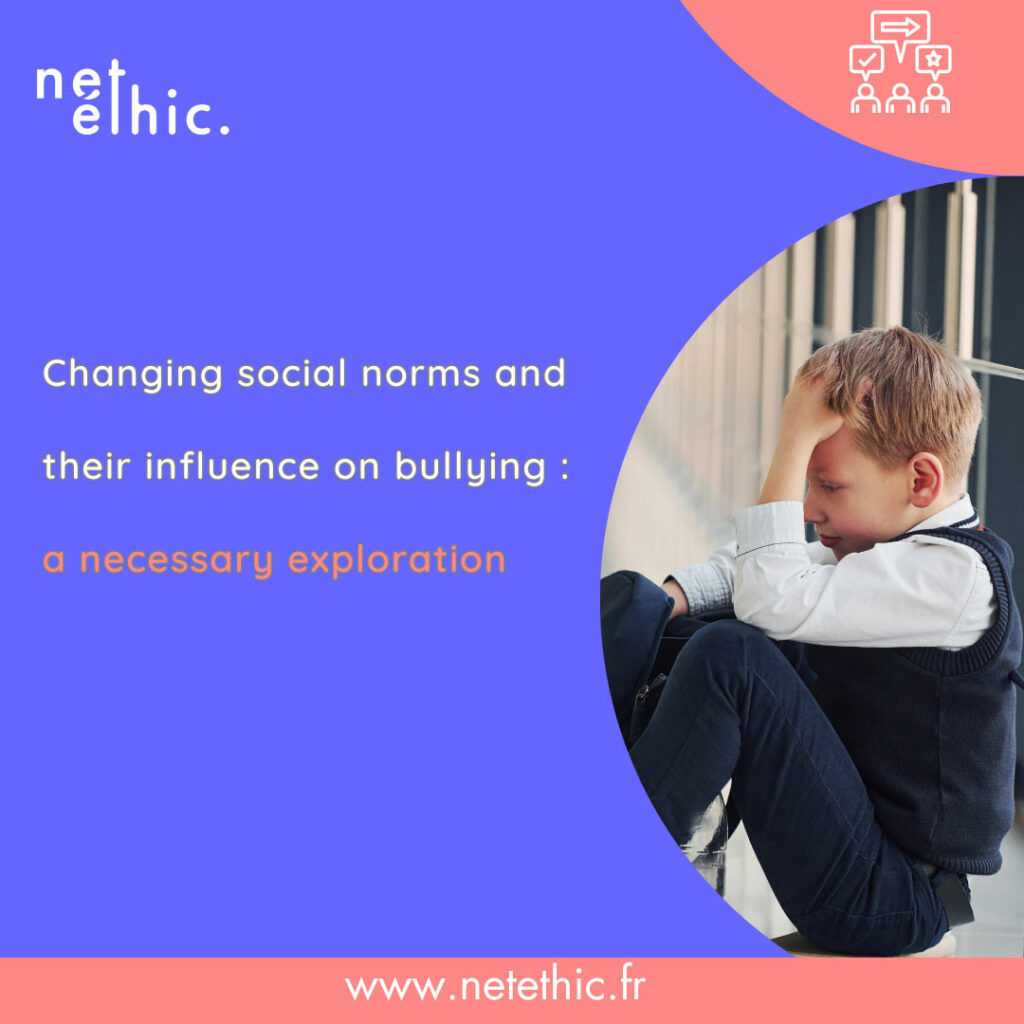Netéthic, a software solution targeting both traditional and cyber bullying
Changing social norms and their influence on bullying : a necessary exploration
In an ever-changing world, social norms exert a profound influence on various aspects of our lives, including the school environment. This article looks at the intriguing idea that changing social norms may play a crucial role in the complex phenomenon of bullying in schools.

Social norms and bullying
Constantly evolving social norms are powerful forces shaping social dynamics. Their impact on school bullying is multifaceted, and each aspect deserves special attention. These norms manifest themselves as follows:

1. Cultural changes :
When such changes create divisions or fuel prejudice, a breeding ground for bullying emerges. For example, growing acceptance of diversity can help reduce bullying, while negative cultural changes can lead to the stigmatization of certain groups of students. It is essential to analyze these developments to understand how they shape interactions in the school environment.
2. Role of the media :
Beauty standards, achievement norms and media representations can have an impact on students’ self-esteem. Unattainable ideals disseminated by the media can create a climate where harassment thrives, fuelled by undue social pressure. By taking a closer look at how the media help shape young people’s psyches, we can better understand the origins of bullying.
3. The role of technology :
The advent of technology has revolutionized the way students interact, introducing new challenges when it comes to bullying. Social networks, for example, can amplify the reach and virulence of bullying behavior. Online platforms often become arenas where harassment can manifest itself insidiously. Norms of online behavior are sometimes less defined, creating an environment conducive to forms of harassment such as cyberbullying. Incorporating a thorough understanding of this technological dimension is crucial to effectively combating harassment in the school context.
4. Gender norms :
Social expectations of behavior associated with a specific gender can contribute to bullying. Rigid gender stereotypes can lead to mockery and attacks on those who don’t fit traditional norms of masculinity or femininity. Raising awareness of the diversity of gender identities and challenging stereotypes can help create a more inclusive environment.
5. Academic performance :
Social pressures related to academic performance can lead to bullying behavior, including the stigmatization of academically challenged students. Excessive competition and unrealistic expectations can create a climate where bullying becomes a means of devaluing peers who don’t meet prevailing academic standards.
6. Language standards :
Language and accent differences can become sticking points in the school context. Students who speak a different language or have a distinct accent may be subjected to verbal harassment. Promoting linguistic and cultural diversity can help reduce such harassment.
7. Social status norms :
Differences in social status can also play a role in bullying. Students perceived to be outside the dominant social circles may be subject to ridicule and isolation. Raising awareness of social diversity and promoting inclusion can alleviate these pressures.
In short, each shift in social norms plays a distinct role in the complex web of bullying. By analyzing these elements in depth, it becomes possible to design targeted approaches to mitigate these negative influences. Awareness of these factors is the crucial first step towards creating a more inclusive and respectful school environment.